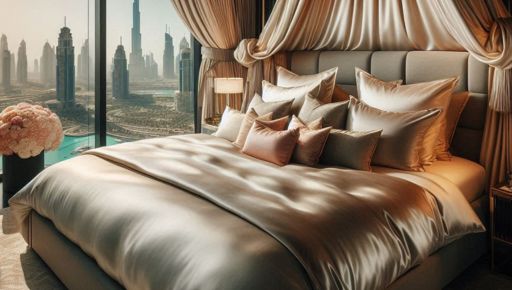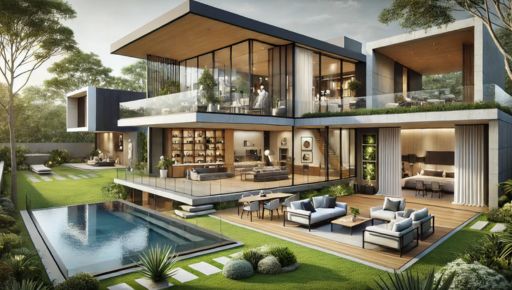Designing your dream home is an exciting journey, blending your personality, needs, and lifestyle into a perfect living space. Whether you’re building from scratch or renovating an existing property, a thoughtful approach to design can ensure your home is not only beautiful but also functional and comfortable. Here are five essential tips to guide you in designing your dream home.
1. Define Your Vision and Priorities
Before you start sketching out plans or browsing through design magazines, take time to define your vision for your dream home. Consider your lifestyle, preferences, and how you envision your daily life unfolding in this space. Are you an entertainer who loves hosting gatherings, or do you prefer a cozy, private retreat? Think about the following:
- Lifestyle Needs: What does your family need? Consider the number of bedrooms, bathrooms, and any special rooms like a home office, gym, or playroom.
- Style Preferences: What architectural style appeals to you? Modern, traditional, rustic, or a blend of styles?
- Future Plans: Will your family grow? Plan for flexibility and potential future needs.
Defining your vision and priorities helps in creating a cohesive design that aligns with your lifestyle, making your home truly yours.
2. Focus on Functionality
While aesthetics are important, functionality should be at the forefront of your design process. A home that looks good but doesn’t serve your practical needs can quickly become frustrating. Here’s how to ensure your home is both beautiful and functional:
- Space Planning: Efficiently plan your space to avoid overcrowding. Consider flow and accessibility. Open floor plans can enhance the feeling of space, but make sure there are defined areas for different activities.
- Storage Solutions: Incorporate ample storage options. Custom cabinetry, built-in shelves, and clever storage solutions can keep your home organized and clutter-free.
- Lighting and Ventilation: Adequate lighting and ventilation are crucial. Plan for natural light sources, and ensure you have a mix of ambient, task, and accent lighting. Proper ventilation improves indoor air quality and comfort.
Prioritizing functionality ensures that your home is not only stylish but also practical and comfortable for everyday living.
3. Choose the Right Materials and Finishes
Selecting the right materials and finishes is key to achieving the look and durability you desire. High-quality materials can enhance the beauty of your home while adding value. Consider the following:
- Durability: Choose materials that withstand wear and tear, especially for high-traffic areas. For flooring, consider options like hardwood, tile, or durable laminates.
- Maintenance: Some materials require more upkeep than others. Opt for finishes and materials that fit your lifestyle and maintenance preferences.
- Aesthetic Appeal: Ensure that the materials and finishes you choose complement your overall design theme. Coordinating colors, textures, and patterns can create a cohesive look.
Investing in quality materials and finishes not only enhances the aesthetic appeal of your home but also ensures long-term durability and ease of maintenance.
4. Incorporate Smart Home Technology
Incorporating smart home technology can greatly enhance the convenience, efficiency, and security of your home. Here are some smart home features to consider:
- Home Automation: Control lighting, heating, cooling, and security systems from your smartphone or voice-activated devices. Smart thermostats and lighting systems can adjust based on your preferences or schedule.
- Security Systems: Install smart security cameras, alarms, and doorbells to monitor and secure your home remotely.
- Energy Efficiency: Smart home technology can help manage energy usage, reducing your utility bills. Consider smart appliances, energy-efficient lighting, and programmable thermostats.
Integrating smart home technology into your design ensures modern convenience and efficiency, adding both functionality and value to your home.
5. Work with Professionals
Designing your dream home can be complex, and working with professionals can help bring your vision to life. Here’s why collaborating with experts is beneficial:
- Architects and Designers: Professional architects and interior designers can offer valuable insights and expertise. They can help refine your ideas, provide design solutions, and ensure that your home meets building codes and regulations.
- Contractors: Experienced contractors are essential for executing your design plans. They can manage the construction process, coordinate with subcontractors, and ensure that the project stays on schedule and within budget.
- Consultations: Consider consulting with specialists for specific needs, such as landscape designers, lighting experts, or home automation specialists.
Working with professionals ensures that your design is executed efficiently and effectively, turning your dream home into a reality.
Conclusion
Designing your dream home is a rewarding endeavor that combines creativity, planning, and practical considerations. By defining your vision, focusing on functionality, selecting the right materials, incorporating smart technology, and collaborating with professionals, you can create a home that reflects your personality and meets your needs.
Remember, the key to a successful home design lies in thoughtful planning and execution. Take your time to make informed decisions, and don’t hesitate to seek expert advice. With these essential tips, you’ll be well on your way to designing a home that is not only beautiful but also perfectly suited to your lifestyle.



